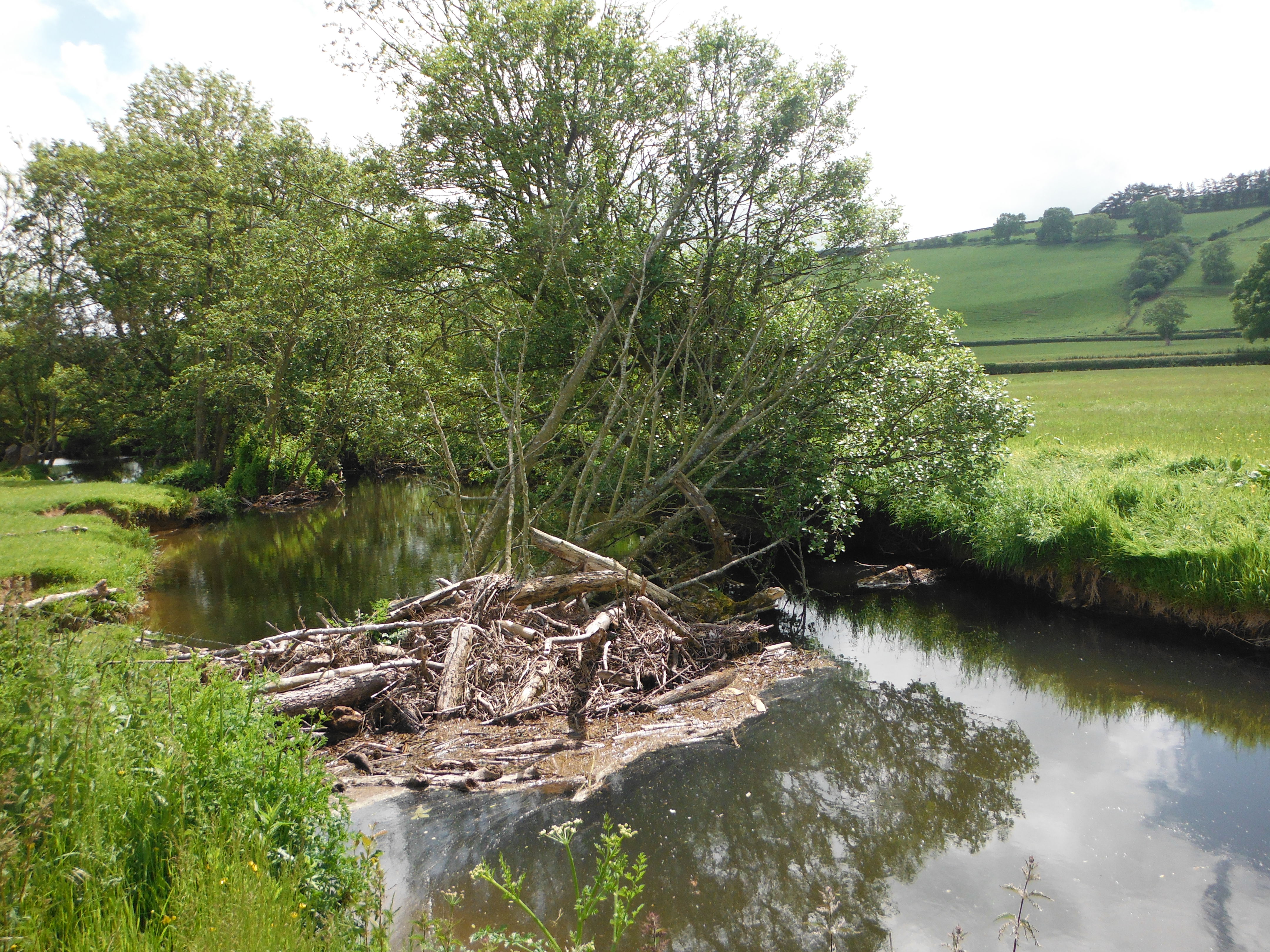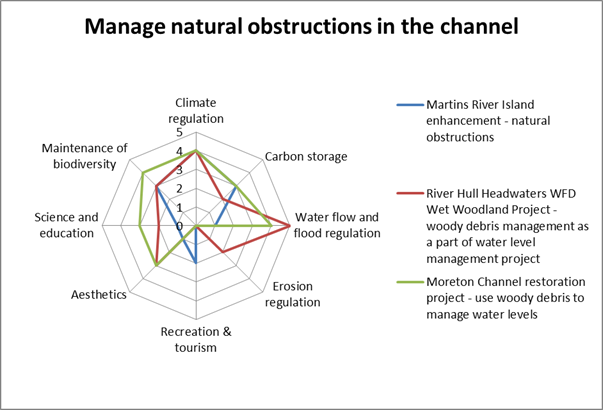Fallen trees and branches (often called Woody Debris) are a natural part of many watercourses, leading to areas of slack water and sedimentation, and areas od faster flow and increased erosion. Woody debris creates important in-channel habitats, providing shelter and shading for fish and other aquatic organisms.
 Fallen trees and branches need to be managed sensitively to avoid unnecessary damage to the habitats they support. Where possible, woody debris should be retained in the channel unless it causes a risk of increased flooding (e.g. blocking bridges and culverts). If it is necessary to remove trees and branches, this should be done carefully to avoid direct damage to bankside habitats and the in-channel habitats.
Fallen trees and branches need to be managed sensitively to avoid unnecessary damage to the habitats they support. Where possible, woody debris should be retained in the channel unless it causes a risk of increased flooding (e.g. blocking bridges and culverts). If it is necessary to remove trees and branches, this should be done carefully to avoid direct damage to bankside habitats and the in-channel habitats.
Techniques
A range of techniques can be used to implement this activity:
- Retention of fallen trees and branches unless they compromise flow conveyance or cause a blockage risk
- Placing of wood in rivers (sourced locally) in varying sizes and shapes depending on target habitats
- Use of sensitive management techniques which do not impact upon banks or marginal habitats. These could include removal of trees and branches by hand, and coppicing or pollarding trees to control the source of large woody debris
Benefits
Maintenance activities which carefully manage fallen trees and branches can achieve a wide range of benefits:
- Direct ecosystem benefits associated with the retention of important temporary habitats and the maintenance of biodiversity
- Natural erosion protection
- Maintenance of natural sediment processes, by encouraging the temporary accumulation of sediment in the channel margins
- Benefits for any commercial fisheries in the watercourse, by providing natural habitats for fish and their prey
- Reduced cost of removal works
Case Study Benefits
This diagram displays a comparison of benefits scores (using a high-level ecosystem service assessment methodology) associated with the techniques used in each case study. More details on the methodology can be found here.